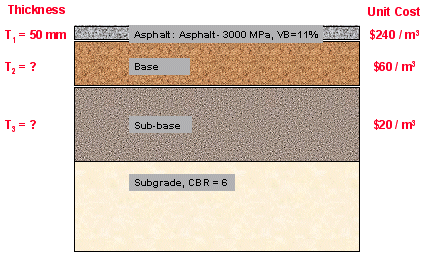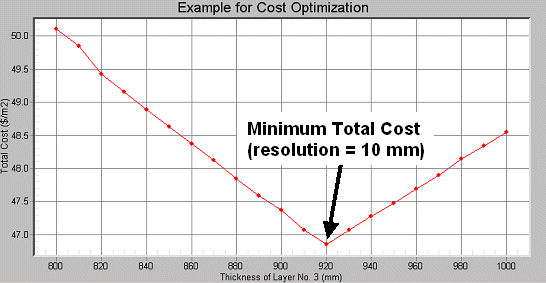APSDS – Airport Pavement Design System
The Airport Pavement Structural Design System (APSDS) software will streamline your runway and taxiway design projects. The optimisation feature gives cost-effective and reliable designs.
 APSDS enhances the complex and demanding task of airport pavement design, construction and maintenance.
APSDS enhances the complex and demanding task of airport pavement design, construction and maintenance.
One of the unique features of APSDS is that it takes rational account of aircraft wander. Wander is the measure of how successive aircraft deviate from runway or taxiway centre lines. Increased wander reduces pavement damage by different amounts that depend on pavement thickness. Incorporating wander can lead to significant savings in construction costs.
Easy to use, yet comprehensive
- The user-friendly interface runs under Microsoft Windows.
- Typical runs take a few seconds on Pentium PCs
- results in tabular form and report quality graphs
- you can export results to other application packages such as word processor or spreadsheet.
- Pavement and loading databases save re-keying information.

- Comes with a Standard Aircraft Library – that you can update automatically by installing newer versions of APSDS.
- You can export results in tabular form and report-quality graphs.
Sample plot of the lateral distribution of cumulative damage predicted by APSDS

Traffic
- no limit on the number of aircraft types or loading conditions
- uses real multi-wheel gear layout
- wander statistics specified by the standard deviation
- analysis explicitly uses specified spectrum
- no inaccurate short-cuts such as “equivalent” single wheels
- special loadings such as braking included
- does not need conversion to coverages
Material models
- multi-layered pavement system
- isotropic and anisotropic materials
- use your material properties
Reservoir Method for calculating damage due to complex loadings
APSDS 5.0 handles complex loadings by the ‘reservoir’ method, as used in bridge design. The ‘reservoir’ method consistently computes the damage from overlapping strain pulses due to multi-axle landing gears.
Calibrated to latest full-scale test results
With our new calibration (details in this paper), APSDS 5.0 pavement designs are thinner than given by the FAA design software, FAARFIELD.
Click here for more details and sample designs for A380-800, B747-400 and B777-300 aircraft.
Cost Optimisation
A Parametric Analysis feature can loop through a range of thicknesses for one or two layers while simultaneously designing the thickness of another layer. This feature will optimise up to three layers. The Cost Analysis feature lets you fine-tune layer thicknesses to lower construction and maintenance costs.
For example, for this pavement structure, you can easily find the Base and Subbase thicknesses that will minimise total cost:

This automatically generated graph shows the pavement configuration with a minimum total cost:

Automatically generated plot: Total Cost vs. Layer 3 Thickness
System Requirements
- Microsoft® Mouse or compatible mouse.
- Microsoft® Windows Windows 7, Windows 8.x , Windows 10 or Windows 11.
(Compatible with both 32-bit and 64-bit versions.)
APSDS is widely recognised as an advanced layered elastic pavement design software
It is both transparent to the user and offers greater flexibility to the pavement designers than is permitted by other design tools
Free from Bias: The freedom and flexibility of the software is allowed as it is not intended to implement any particular or regulated design procedure
APSDS’s freedom from factors of safety or bias means that the designer can obtain 50% reliability or ‘best-fit’ thickness designs The designer can then utilise judgment and experience in selecting input parameters and observing their effect on the design thickness and subsequent pavement design reliability
Professor Greg White, University Of the Sunshine Coast, Australia
Further details
- Click here for a comparison of the features of our three pavement design packages.
- download the Product Brochure
- Short overview paper from the ICAO Journal
- A detailed article describing theory and applications
- Interaction Effects for Multiple Gears




